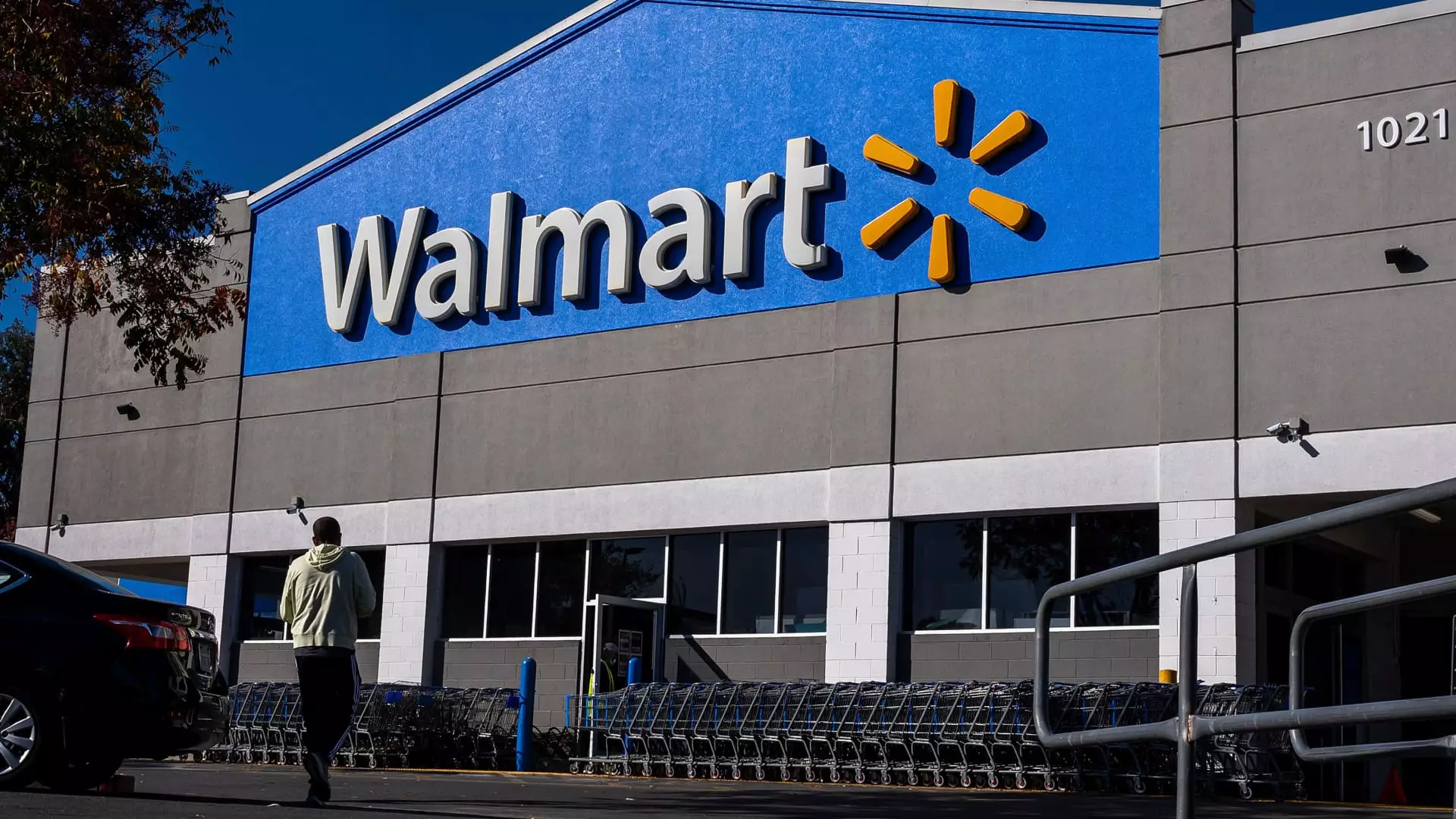As the U.S. economic landscape evolves, numerous variables are at play that could reshape consumer experiences. Recently, prominent retail executives have aired concerns regarding potential tariffs proposed by President-elect Donald Trump, drawing sharp attention to how such policies could reverberate through the economy. John David Rainey, CFO of Walmart, highlighted in a critical interview that the company may have to raise prices on certain items if these tariffs come into effect. This was not merely speculation; it underscores an impending shift that may place considerable strain on American households.
Rainey’s insistence that “we never want to raise prices” reflects the ethos of Walmart — to maintain “everyday low prices” for consumers. However, the ramifications of untrammeled imports subjected to higher tariffs present an operational reality that retailers cannot ignore. The potential price hikes pinpoint the delicate balance companies must maintain between profitability and consumer loyalty.
It is critical to understand the implications of President Trump’s proposed tariffs, which range anywhere from 10% to an alarming 100% on select goods, particularly those imported from China. These tariffs could be likened to a tax imposed on American families, as articulated by Matthew Shay, CEO of the National Retail Federation. In an economy where inflation has only recently become more manageable after years of financial pressure on consumers, these tariffs could regenerate heightened costs of living, effectively reversing any progress made toward affordability.
Moreover, other major retailers are starting to voice similar concerns. For instance, E.l.f. Beauty’s CEO Tarang Amin indicated that his company might also have to increase prices should the tariffs take hold. Steve Madden, a notable footwear manufacturer, divulged plans to reduce imports from China by 45% to mitigate the financial stress associated with potential duties. These voices form a chorus echoing concerns about how the tariffs could disrupt even the most strategically planned supply chains.
While many retailers face inevitable challenges from such tariffs, it is vital to note that a significant portion of goods sold by companies like Walmart are insulated from these financial shocks. Rainey pointed out that approximately two-thirds of the products offered by Walmart are either made or assembled domestically. This statistic not only highlights the importance of local production but also demonstrates the retailer’s strategy of reducing risk by not heavily relying on any single supply source, particularly China.
In a similar vein, Lowe’s has also committed to diversifying its supply chain. CFO Brandon Sink noted that about 40% of its goods are sourced from outside the U.S., yet expressed confidence in the company’s preparedness should tariffs be enforced. The flexibility inherent in these diverse supply chains may ultimately provide a buffer against the market volatility created by government policy shifts.
Impact on Consumer Buying Power
Despite the assurances from retail leaders that they are preparing for the possibility of tariffs, the underlying economic implications remain troublesome for consumers. A significant increase in retail prices could curtail purchasing power, leading to an essential erosion of discretionary spending. This would likely have cascading effects throughout the economy, impacting employment levels and consumer sentiment.
Price inflation caused by tariffs is not a mere economic footnote; it has real effects on American families trying to balance budgets in an already challenging financial landscape. When essential goods become more expensive, the reliance on credit could increase, resulting in higher personal debt levels that threaten financial stability across the nation.
While the economic and policy nuances surrounding tariffs present complex challenges for retailers, the overarching message is clear: both businesses and consumers will bear the brunt of potential price hikes. The collective experiences and strategic planning of retail giants like Walmart and Lowe’s will serve as critical indicators of navigating this new economic terrain. As we look to the future, the adaptability of retail companies will be tested, and the resilience of American consumers will undoubtedly play a pivotal role in shaping the outcome of this evolving narrative.

